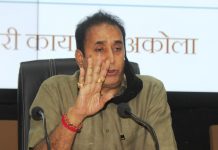WHO Singh is a Delhi born and based mixed-media artist. He started his career as an art journalist, with a PG Diploma in Journalism from Asian College of Journalism. He has exhibited at the 2009 Indian Art Summit, the India-Australia show at Art Konsult, New Delhi, and the Aakriti Art Gallery in Kolkata.

Why do you use X-rays as installations?
I was a sickly child who made a lot of trips to the hospital. The image of X-rays stayed with me. It lets me explore what lies beyond surfaces. It’s not macabre, but a sane and detached way of seeing people. There’s a lot of beauty there. I can do so much with the texture, and the play of light and darkness. A work of art is not an end product; it has a back-story that extends into the cosmos. With X-rays, I can engage with the story.
Your vision for X-rays ?
I want to go bigger with my installations. Right now, they are indoors, lit artificially. I want to set them up in natural lighting. I want them to be a public engagement.
Why switch from journalism to art?
Covering the art beat, I was exposed to a lot of art and artists. What we call the back of the book can address our journalistic concerns better as it takes an abstract view and includes everything in a layered manner. Gradually I grew disillusioned by normal standards of journalism. I was growing as a person and found news cycles confining. I began to express that through art.
How much of your journalism do you put in art?
My work is more informed by my knowledge. I did this installation in Australia called The Black Tide. I wanted to combine the imagery of a coastal Australia that celebrates surfing, with its racist past and the genocide of the aboriginals. I’d read so much about the racial violence that I could pick on these themes. My journalistic training betters what I create.
What do you think about art writing in India?
There are various audiences. One, which is interested in the business. Another, which cares about the aesthetic value. A third, that functions as a social registry following the who’s who. I’m interested in reading those who track new trends, practices and lesser-known artists. But such writings happen on too small a scale. Art writing will improve once people look at art not just as a decorative product but a way of seeing the world. Good art has to change perceptions.
Aradhna Wal is a Sub Editor with Tehelka.
aradhna@tehelka.com












